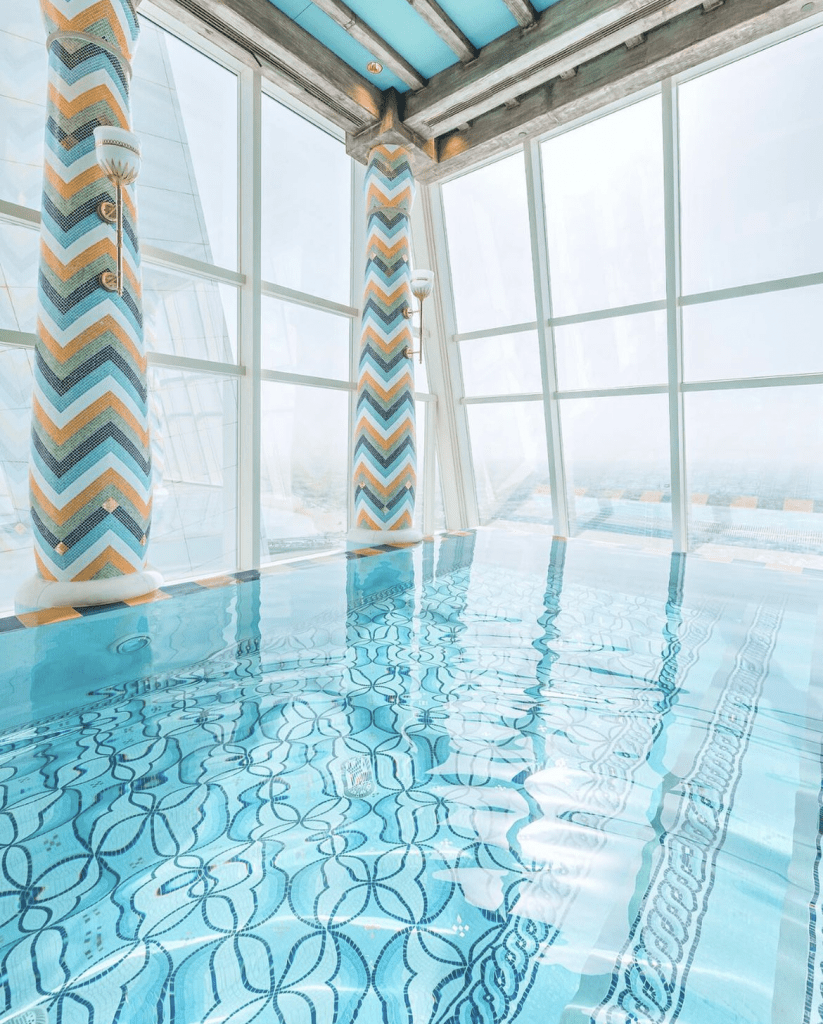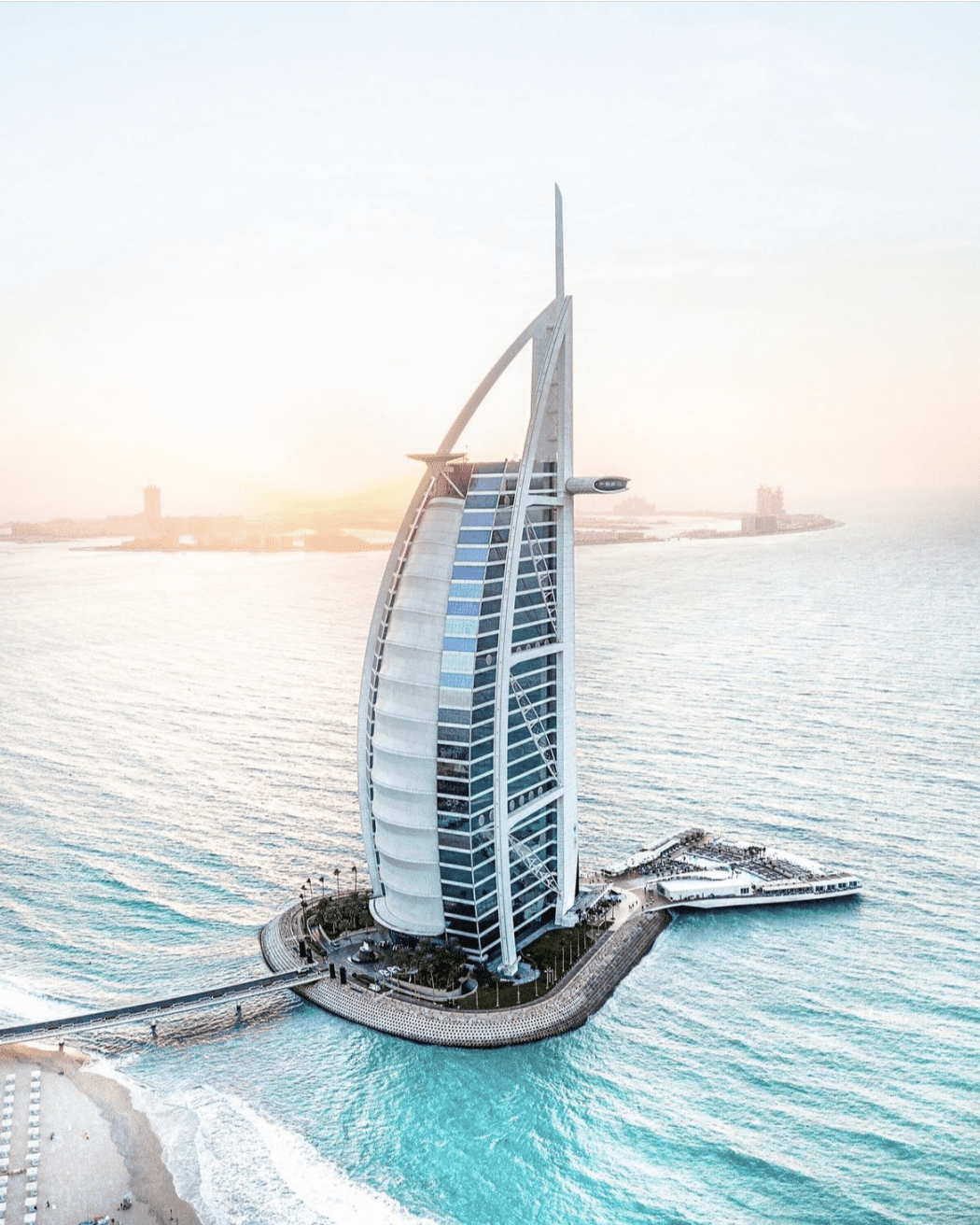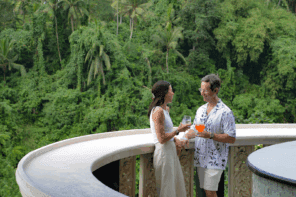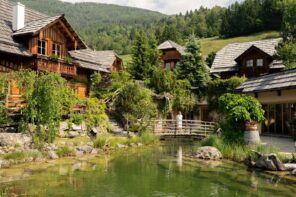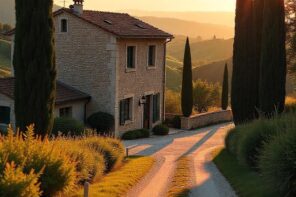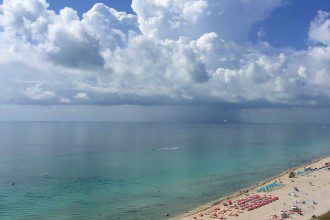The Burj Al Arab Jumeirah, nicknamed a seven-star hotel, is the world’s seventh tallest building. The property is styled after an Arabian dhow sail and features an infinity pool terrace and a man-made beach.
The Burj Al Arab exudes luxury on every surface. Its grand interiors have been decorated with nearly 2,000sqm of 24K gold leaves, but that’s not all. At its Junsui Japanese restaurant, the hotel also has the world’s largest Swarovski crystal ceiling, which is made up of 21,000 shimmering crystals and a helipad. Furthermore, much of the Burj Al Arab’s floors and walls are made of exclusive Italian statuario marble, the same type used by Michelangelo to create his masterpieces.
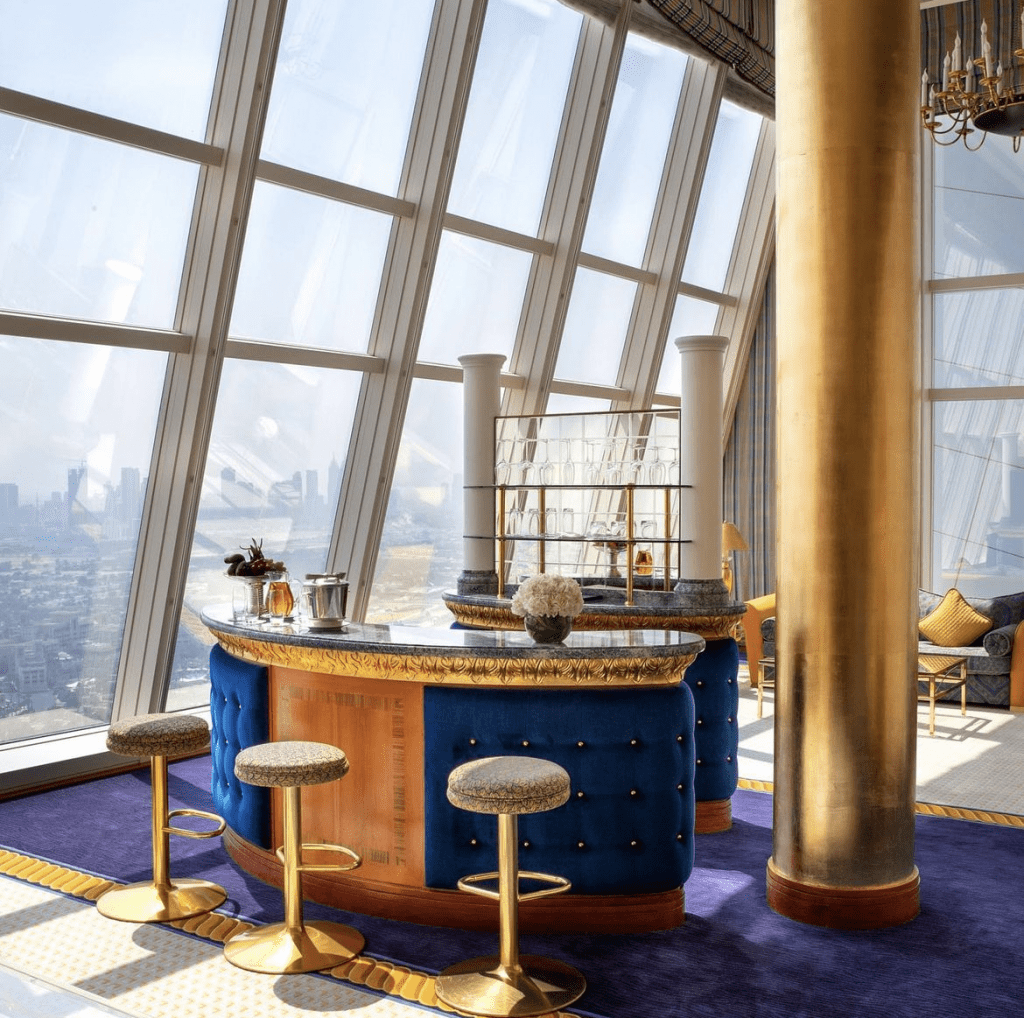
Dubai had already perfected the construction of manmade islands before the Palm Jumeirah changed the world map. The Burj Al Arab is not on the mainland, but rather on an artificial island just off the coast of Dubai, connected to the rest of the city by a bridge road. The project began in 1994 and took five years to complete, involving 3,000 companies and contractors, 250 designers, and 3,500 workers.
The helipad at the Burj Al Arab is as iconic as the hotel itself. Tennis legends Roger Federer and Andre Agassi played a friendly match on the helipad in 2005, a year after Tiger Woods did, and just as Rory McIlroy would later. Long Ma and ShiWen Liu, two of the world’s best table tennis players, competed against London Olympic gold medalists Jike Zhang and Xiao Xia Li here. In 2017, professional kitesurfer Nick Jacobsen performed a world-first stunt by leaping off the helipad with his kiteboard.
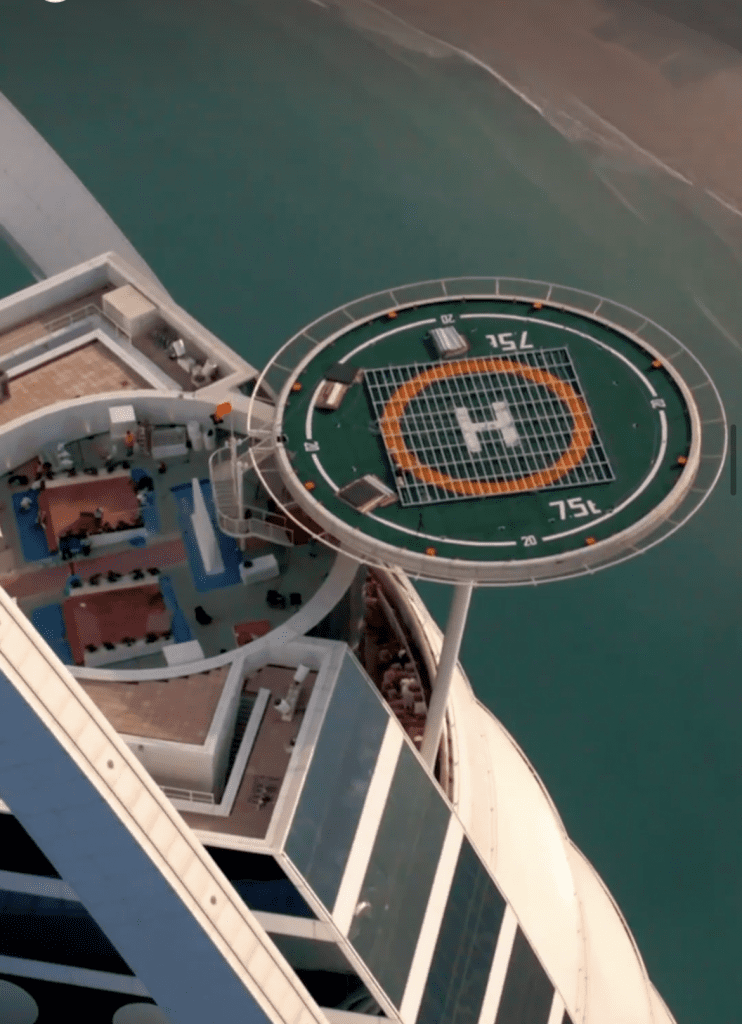
Aside from the gold-gilded interiors, the hotel is meticulously designed to be an indulgent retreat. The exclusive eiderdown duvets in the rooms are handpicked from abandoned eider duck nests in Iceland. Only 2,000kg of soft feathers can be harvested per year, making them extremely valuable and scarce. Guests can also select from a pillow menu of 17 options, ranging from anti-aging pillows to soothing aromatherapy infusions.
